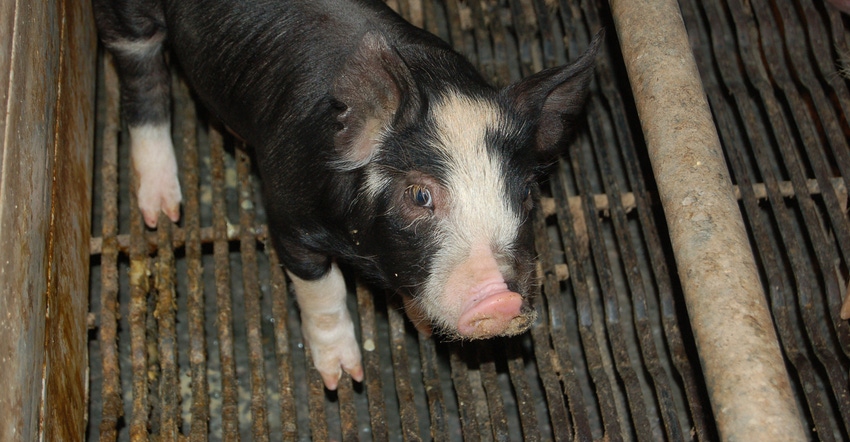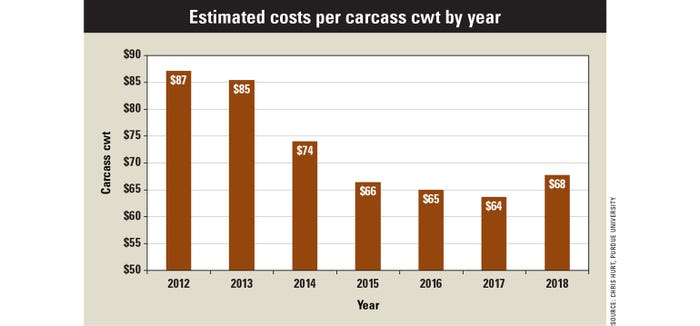April 2, 2018

By Chris Hurt
Pork production costs have dropped for the past five years, but that downward trend may end. I estimate that 2018 costs will rise $4 per carcass cwt, or 6%.
What is the reason for this increase? Feed is the largest single source of costs, and soybean meal prices have jumped. Last year Decatur, Ill., high-protein soybean meal averaged $315 per ton. Using actual meal prices to date and futures estimates for the rest of the year, meal could climb to about $365 per ton in 2018, a 16% increase.
The driver of these higher prices is yield-reducing dry weather in Argentina. Argentina’s soybean meal exports recently have been about one-half of the world’s total. They are very important to world supplies. The U.S., by contrast, exports a lot of raw soybeans, but only 16% of the world’s soybean meal.
Continued dryness in portions of the central and southern Great Plains has raised concerns about wheat production and contributed to higher corn prices. More importantly, corn exports rebounded early in 2018. Coupled with prospects for lower corn acreage, this contributed to higher corn prices. In 2017, U.S. farm prices averaged $3.36 per bushel. My estimates for 2018, using futures markets as a forecast, is for corn to average $3.65, a 9% increase.
Higher interest cost
The trend to higher costs in 2018 also stretches into energy, labor and interest costs. The U.S. Energy Information Administration is expecting electricity costs to rise by a reasonable 2%. But look out for liquid fuels, with retail gasoline up 7% and on-highway diesel prices up 9%.
Labor markets are heating up with low unemployment rates and a growing economy needing more workers. Some of the nation’s key pork-production states have unemployment rates well below the national average. Iowa, Nebraska, Minnesota and Indiana have unemployment rates around a full percentage point lower than the national rate. Because of this tight labor supply, wage rates will move higher by about 3% this year.
Interest rates will be higher in 2018, as well. Interest rates on operating loans may rise a full percentage point, while rate increases on intermediate and long-term loans are expected to be somewhat less. The Chicago Federal Reserve Bank reports rates on 2017 farm operating loans at 4.9%. An increase to 5.9% in 2018 would raise the borrowing costs by 20% on a fixed dollar amount of debt.

I still anticipate lean hog prices to average about $67 per carcass cwt this year, but rising estimated production costs have now crept up to $68 per carcass cwt. That makes the 2018 outlook shift to breakeven, or maybe even small losses. Those losses will be most noticeable in the final quarter of 2018.
Hurt is a Purdue University Extension agricultural economist and marketing specialist. He writes from West Lafayette, Ind.
You May Also Like




